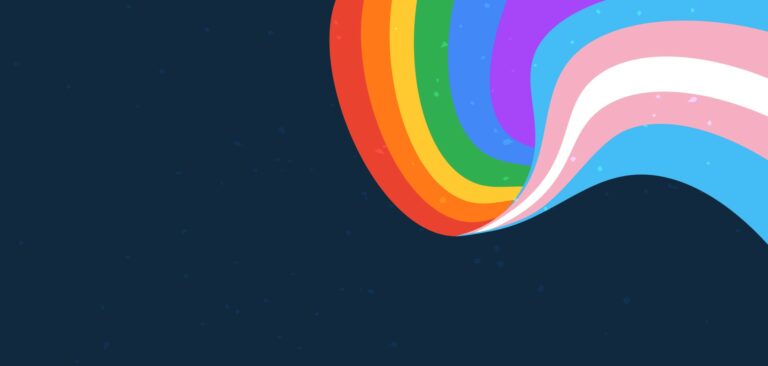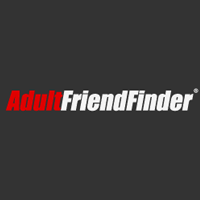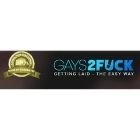Racism in the LGBTQIA+ Community and Dating

The LGTBQIA+ community as a whole has been gaining more representation, acceptance, and equality with each year. However, there is a trouble issue within the community that needs to be addressed. BIPOC, especially Black people, have been experiencing racism even from other people within the LGBTQIA+ community.
Between systemic issues such as white privilege and removing BIPOC people from a person’s preferences on dating apps, we feel it’s important to bring light to this topic.

Table of contents [ Show Hide ]
- Is there racism in the LGBTQIA+ community?
- Who’s the target group of racism in the queer community?
- When did the racism start?
- Forms of racism against people of color in the LGBTQIA+ community
- Our recommendations for LGBTQ Dating Sites and Apps
- Ethnic filters on LGBTQIA+ dating apps
- How can I be a good ally while dating a queer person of color?
Is there racism in the LGBTQIA+ community?
Although it may not seem to be the case because of the LGBTQIA+ community facing its own form of discrimination, racism does exist within the community. Unfortunately, despite the queer community facing a lack of acceptance and understanding, the community is still drenched in cisgender white gay men privilege.
How significant is this issue? New research released by Stonewall, the UK’s leading charity for lesbian, gay, bi, and trans equality states:
“Half of black, Asian and minority ethnic (BAME) LGBT people (51 per cent) said they’ve faced discrimination or poor treatment from the wider LGBT community. The situation is particularly acute for black LGBT people: three in five (61 per cent) have experienced discrimination from other LGBT people, according to the Stonewall study.”
The term for non-white ethnicities in the UK is ‘BAME’, however for the rest of the article, we will use the umbrella term BIPOC (black, indigenous, and other people of color) when applicable.
As mentioned in the study, at least half of all BIPOC individuals within the LGBTQIA+ community has experienced discrimination. The issue of racism is still misunderstood, as many people may believe racism only involves dramatic examples such as hate crimes, using racial slurs, or refusing service due to someone’s race.
The reality is that racism is much more detailed and systemic than just those examples. Many countries around the world have been colonized by white people who built their own nations on the mistreatment, racism, and genocide of BIPOC people. Even if some progress has been made towards racial equality, white privilege still exists which leads to ongoing misconceptions and stereotypes about people of color.
Who’s the target group of racism in the queer community?
Based on the study mentioned above by Stonewall, the people surveyed are a variety of ethnicities. However, it should be noted that Black people on average disproportionately face racism. Some examples of this include:
- 88% of police stops in New York City involved Latinx and Black people, with 70% of those stops being determined as innocent.
- Black women are up to 4 times more likely to die from pregnancy-related complications than a white woman.
- Black Americans, on average, receive prison sentences that are 19.1% longer than white Americans from the same crime.
- Many Black transgender people live in extreme poverty with approximately 34% reporting trying to survive on a $10,000 salary.

This list is only a sample of the statistics posted on the Do Something and the National LGBTQ Task Force websites, but it illustrates how dire the situation is for many Black people, especially if they are also in the LGBTQIA+ community.
One specific group that is targeted the most — especially with violence — are Black transgender women. According to the National Center for Transgender Equality, 28 transgender people were killed in the United States in 2020 with the majority of those people being Black and Latina trans women.
When did the racism start?
It’s difficult to nail down the specific beginnings of racism towards LGBTQIA+ people of color as it seems racism in general has been around for millennia, but there are some examples related to the Stonewall riots of 1969.
The Black community deserves to be more represented, especially when speaking of the Stonewall riots and the Pride parades that were created as a result of the riots. The reason for this is that many people on the front lines, such as Marsha P Johnson, Stormé DeLarverie, and Miss Major were Black transgender and queer people.
The erasure of Black people from the history of Pride month continues into present day, when a 2015 “Stonewall” movie by Roland Emmerlich portrayed a white gay man throwing the first brick instead of Marsha P Johnson.
Another example includes discrimination within the Castro neighborhood in San Diego that has become famous for the number of gay bars in the area. However, even that neighborhood has provided very little safe spaces for the BIPOC community as locals such as Afrika America, a drag performer, said in an interview that Castro has always been a predominantly white area.
Even though Castro is seen as a haven, especially for people in the gay community, it unfortunately sounds like the neighborhood isn’t as accepting as it seems.

Forms of racism against people of color in the LGBTQIA+ community
Under the umbrella term ‘racism’, there are various forms that the BIPOC community face both outside and within the LGBTQIA+ community. Racism can come in all forms, from microaggressions that might not even be realized by the person doing it, all the way to blatant violent attacks.
Below, we will list some examples of the forms of racism that exists and should never occur no matter the circumstance.
- Microaggressions: This is defined as, “indirect, subtle, or unintentional discrimination against members of a marginalized group.” For example, asking where someone is ‘originally from’ even when they have lived their entire lives in one country is a racial microaggression.
- Stereotypes: This is a very common issue that anyone can encounter. This is an oversimplified view of a group, and common examples of a stereotype can be things such as Jewish people being good with money, or all African people live in small villages.
- Sexual racism and stereotypes: This is similar to the above point, but it’s more focused on sexual stereotypes. An example could be not seeing Black women — especially Black trans women — as not beautiful or feminine enough simply because the beauty standard is white-washed. Another example is the continued stereotype that Asian women are all submissive in a relationship compared to their partner.
- Violence: At the very least, this point should be obvious. Attacking anyone, no matter the situation, is unacceptable. However, it is also racist when the attack is based on someone’s skin color or any perceived stereotype about that person.
Our recommendations for LGBTQ Dating Sites and Apps
These are our top picks for LGBTQ dating sites and apps. Check them out today!
- Millions of people trust in eharmony
- Very supportive of the LGBTQI+ community
- Matching algorithm proven to work
- Advance search tools
- Connect with your perfect match
- No hidden charges
- Prompt reply
- 24 hrs customer service
- One on one Romance Consultations.
- 100% real users.
- Large database of verified & attractive Asian and European singles
- Efficient communication and instant messaging
- Top-level safety and professional support
- Meet real asian, european, and latino singles
- Real-time communication with efficient tools
- Professional dating services
- Free registration
- Matches within a few minutes
- Large pool of users
- Enjoy the safety of secure profiles
- Enhanced search filters
Ethnic filters on LGBTQIA+ dating apps
Dating apps such as Grindr and Scruff have now removed ethnic filters from the search preferences after receiving backlash from the BIPOC community. Hinge and some Match Group apps, on the other hand, have kept the ethnic preferences on their apps. Match Group spokesperson Justine Sacco has commented on keeping the filters:
“In many cases we’ve been asked to create filters for minorities that would otherwise not find each other. It’s important to give people the ability to find others that have similar values, cultural upbringings and experiences that can enhance their dating experience, and it’s critical that technology allows communities the ability to find likeminded individuals, creating safe spaces, free from discrimination.”
Although this can be useful for some people, it still doesn’t address the prejudice against BIPOC people and the fact that they may be filtered out of someone’s preferences simply due to their skin color or other identifying features.
Even on apps that don’t have the ethnic filters, there are reports of people seeing phrases such as “No Blacks, no Asians“and “No chocolate, no curry, no rice, no spice” on people’s dating profiles to prevent BIPOC people from matching with them. Of course, people can have their own individual preferences, but the way such things are phrased is racist and problematic.
Blocking most other ethnicities for no good reason is a sign of prejudice and a result of systemic racism that is still an issue to this day. If you have had such a statement on your dating profile at any point, you should ask yourself why you are blocking other ethnicities, and if it is from pre-conceived stereotypes that you have held onto.
How can I be a good ally while dating a queer person of color?
If you are looking to date a queer person of color no matter your own gender identity or sexual orientation, it’s important to also be respectful of the BIPOC community. So, what are some ways that you can be a good ally to their community, whether you are friends or in a relationship?

- Listen to them: If they happen to have any concerns, especially related to issues of discrimination, the bare minimum is to listen to what they have to say.
- If applicable, help them: For example, if they come to you with concerns about your other friend that may have said something hurtful, bring it up to that friend and let them know that what they said is hurtful. Also, it’s important to stand up to anyone that is acting negatively in the moment to any BIPOC person.
- Respect them: Again, this is a no-brainer, but it must be said. Respect also goes for anything, but includes culture. We must all respect each other no matter our background and if you’re not sure about something, double check with that person if it might be okay to do or say.
- Don’t get caught up in your ego: If you make a mistake, and either you notice it or someone corrects you, simply apologize and make it right as best you can. Everyone makes mistakes, but it’s important to acknowledge them and learn from them.
- Be aware: Try your best to educate yourself about issues facing BIPOC people, and anything that may be specific to someone that you are looking to date or have a friendship with. Other than the violence and prejudice facing many Black people, there are other things to be aware of that may or may not affect the other person. For example, it’s becoming common for people in Latin America to use Latinx instead of Latina or Latino for people that identify outside of the gender binary.






